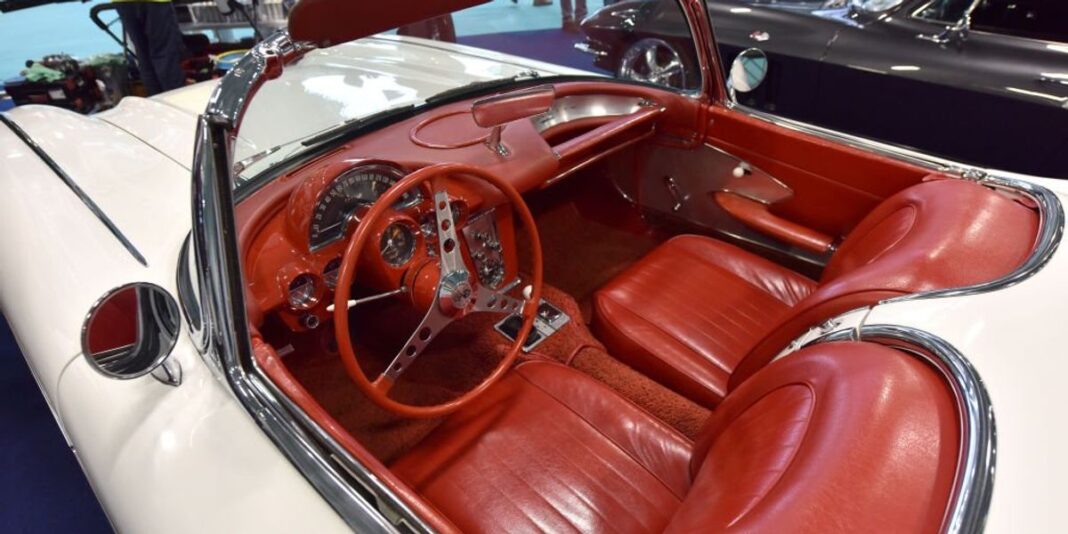When you pick up a pair of good leather shoes, or a bag, or a jacket, the first thing you notice is that beautiful, unmistakable smell. There’s nothing like it.
It’s a smell you rarely encounter when you get into a new car, even if the interior vaguely looks like leather. Instead, your nose fills with the aroma of off-gassing plastic.
Plastic breaks a lot quicker than leather — it crumbles with flakes, and, when that happens, it’s not repairable.
And that’s because “vegan leather” or “faux leather” or “leatherette” or “pleather” or whatever a car company wants to call it has never even come near to an actual animal hide.
Let’s call it what it is: 100% petroleum-based plastic. How’s that for “sustainable”?
Last month, I went to Italy at the invitation of Is It Leather?, a global campaign to educate consumers about leather, one of the oldest materials used by humans. Contrary to what environmental and animal-rights activists say, it’s renewable, practical, and humane.
My destination was Lineapelle, the massive international leather trade show held in Milan. There, I met with some of the finest leather crafters and companies in the world. It was an eye-opening experience and a reminder that no matter how some brands try to trick you, nothing beats the real thing.
Our journey started in Pompeii, in the ruins of a tannery dating back to the first century. The ancient Romans used urine to tan their hides; in modern times, we’ve switched to chemicals such as chromium. Now, that process does produce a fair amount of pollutants, but in recent years leather-makers have pioneered the use of organic compounds like olive leaf extract.
While in Milan, I had a chance to talk with leather crafter and influencer Tanner Leatherstein about something consumers encounter when buying a car. You open the door and look at the interior and seats, and they tell you, “That’s Napa leather.”
Does that mean anything — or is it just a sales pitch?
Napa leather (so called because it comes from a process pioneered in Napa, California), Leatherstein tells me, is a type of finish “they apply on top of the leather. In automotive, you need a really thick layer of finish for … resistance and durability.”
But Napa leather starts with high-quality, full-grain leather, which means it doesn’t need as much finish as lesser-quality hides.
“You can almost think it in terms of makeup,” says Leatherstein. “If the hide is too full of imperfections because it’s an animal scratching itself everywhere, you need a lot of makeup to make it standardized looking, which means a lot of plastics to cover it.”
“But if you have naturally clean hides, which is maybe 10 or 5% of the entire hide population, it doesn’t require a lot of makeup because it’s naturally beautiful. So now you can accomplish this nice look with a minimal layer of plastic finish on top, [meeting] the requirements, yet you still enjoy that natural chaotic look of the grain, the leather grain.”
So if you hear a car interior has Napa leather, that’s a good sign. “There’s a lot of trickery going on in car interiors,” says Leatherstein. “As a consumer, when I’m buying a luxury car I expect real leather, but unfortunately car brands using these plastic materials with leather in the name, and a lot of people think it’s leather.”
Real leather isn’t just nicer, its better for the environment, Leatherstein tells me. “Plastic breaks a lot quicker than leather — it crumbles with flakes, and, when that happens, it’s not repairable. You just have to trash it, and plastic doesn’t go anywhere — it turns into microplastics, which go into the water and the soil; it goes into your plants and vegetables.”
I also met up with saddlemaker and leatherworker Ben Geisler, who walked me through all the various animal hide used to make leather, from cow and sheep, to pig and shark and even alligator.
For more on my time learning about leather in Italy, watch the video here:
– YouTubewww.youtube.com




